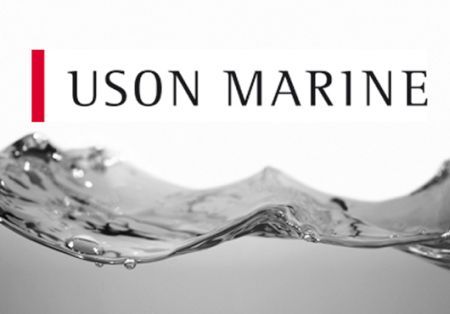
Tighter regulations for the prevention of pollution by garbage from ships are due to come into force on January 1, 2013. Almost all discharges of dry waste into the sea will be prohibited and the rules relating to discharge of food and galley waste will be more stringent.
However, help is at hand Uson Marine’s latest solutions for onboard waste management are adapted specifically to enable compliance. What’s more, they also reduce overall waste management costs, free up valuable space onboard and enhance the shipping company’s environmental profile.
The revised MARPOL Annex V “Regulations for the prevention of pollution by garbage from ships” adopted in July 2011 in resolution MEPC.201(62), include changes that will impact ship and rig operation from January onwards.
Food waste
Discharge of raw food waste will no longer be allowed inside the Special Areas and outside the Special Areas only if it is ground up (able to pass through a screen with openings no greater than 25 mm) and the ship is more than 12 nm from the nearest land. Discharges are only allowed when the ship is en route, which may require the vessel to store the food waste onboard for long periods until discharges are possible.
The solution: A Uson One-Way Macerator System with bridge control
The Uson One-Way Macerator System (OWMS) is a combination disposer and vacuum system. Easy to retrofit, it is designed for hygienic collection and treatment of food waste in compliance with the new regulations. The new food shredder also handles bones, fish skin, and seafood shells, as well as pasta, potatoes, rice, etc., in large quantities.
The food waste is shredded and ground by local macerator(s) in the galley. It is then transported by vacuum to a special holding tank which makes it possible to run the system when the vessel is operating within an area where discharge is prohibited.
Innovative functions include bridge control of waste discharge. This provides extra protection against accidental discharges, when the vessel is in an area where discharge is prohibited.
The system handles food waste safely and has functions to minimize water consumption. With small pipe diameter and flexible pipe routing, it is easy to install on newbuilds or retrofit onboard existing vessels. The system is guaranteed to avoid blockage of food waste in the piping.
Cooking oil
From January 2013 all discharge of cooking oil will be prohibited, including cooking oil and grease mixed with the galley grey water.
The solution: A Uson Grease Separator, designed for marine use
Why risk accidental discharge of grease through the grey water system? An effective way of avoiding this is to let galley grey water pass a Uson Grease Separator (UGS) before entering the grey water tank or sewage treatment plant. Most sewage treatment plants are sensitive to high levels of grease/fat or oil.
Offering peak flow capacity and 99% separation efficiency, a Uson Grease Separator is vastly superior to the normal, obligatory grease trap. It is semi-automatically controlled which means that draining of separated water is done automatically through gravitation. No heating, steaming or chemicals are required and the treated water goes safely to the grey water tank or sewage treatment plant.
The grease separator is equipped with an automatic grease level alarm that alerts when it is time to drain the separator of cooking oil. The complete discharge and cleaning process is performed manually by pushing buttons. The grease, fat and oil are discharged to the dedicated grease holding tank.
Dry waste
To date it has been permissible to discharge many dry waste fractions in ground up form outside the Special Areas. From January 2013 all vessels and rigs will be prohibited from discharging practically all dry waste fractions anywhere, including cargo residues, plastic, floating dunnage, paper, glass, metal, rags, and incinerator ash containing plastics.
The solution: Uson Waste Compactors and Shredders
With the combined use of shredding and compaction the waste volume can be reduced to a minimum. This ensures that the waste requires minimum space onboard the vessel on long routes.
Compactors with proven press power
The machines in the latest generation of energy saving Uson Waste Compactors have been developed to help customers comply with the tighter regulations. More than five tons of proven pressing power reduces the volume of the waste by up to 90 percent, thus drastically cutting onshore recycling costs.
Energy efficient electro mechanical drives
A key advantage of Uson compactors is their clean, silent electro mechanical drives, which minimize environmental impact for “clean” and “green” vessels. The drives also consume much less energy than their hydraulic equivalents, have no risk of oil leakage or deterioration, and the low maintenance requirements allow for a five year warranty. Altogether, Uson compactors have a very low life cycle cost.
Innovative “Double-stroke” and “Stay-n-Hold” functions increase compaction by nearly 20%. The machines have small footprints and are easy to retrofit (“Plug-n-Press”). The Uson Multi Chamber Compactor (UMCC) enables segregation of several dry waste fractions and offers safe compaction in both sack and bale. Uson Baling Presses offer effective handling of large quantities of cardboard.
Shredders solve problems with plastic bottles
Suitable for most dry waste fractions, Uson Marine Shredders increase the compaction rate of several fractions as well as incineration efficiency. Plastic bottles are difficult to compact. Shredding is an efficient cost and space saving solution to the problem.
We use cookies to improve your experience. By continuing to use our site, you accept our Cookies, Privacy Policy,Terms and Conditions. Close X